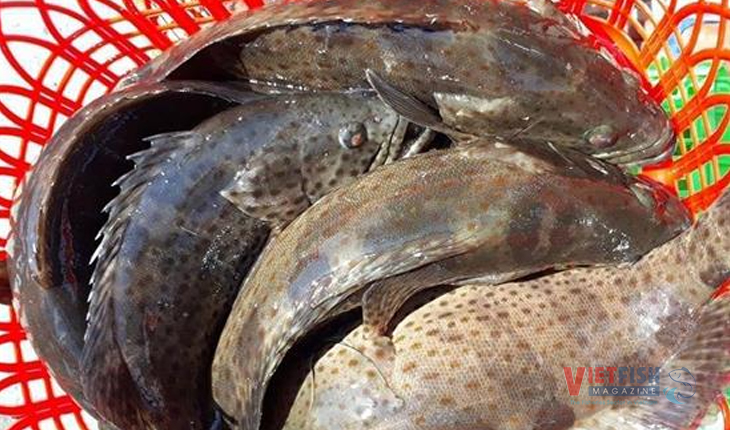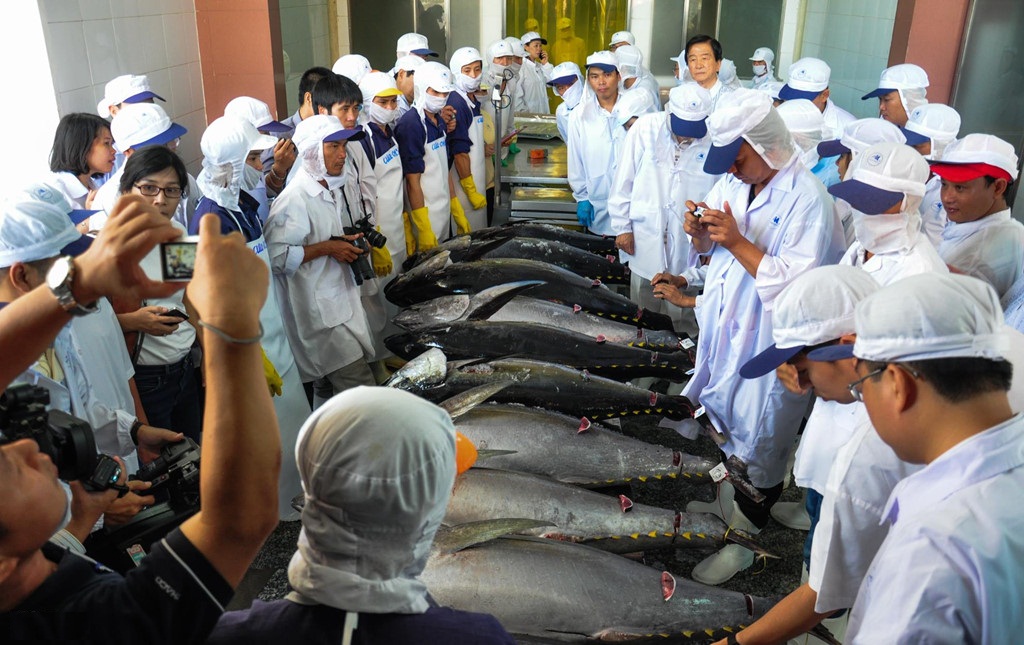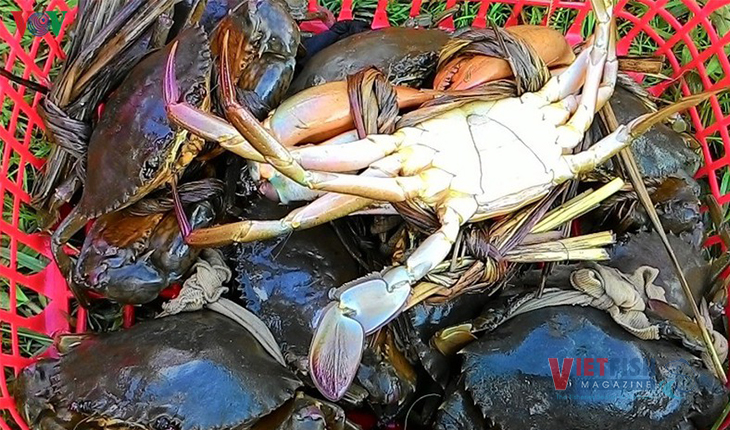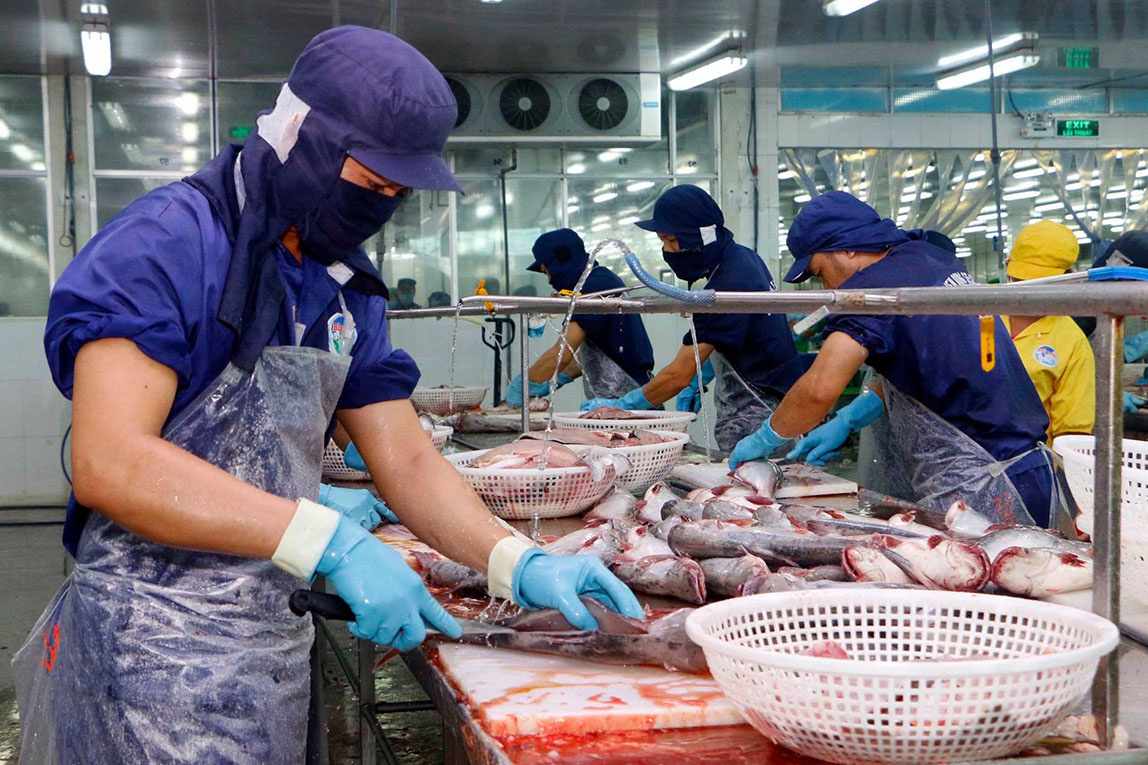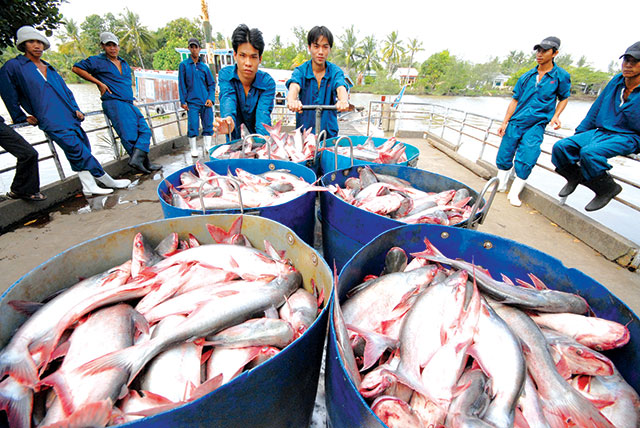Seafood exports to China: Moving toward protocol negotiations
China accounts for approximately one-third of the world's seafood consumption. To expand exports to China, securing a protocol through negotiations is crucial.
Over 800 companies approved for export
According to the General Department of Customs, Vietnam’s seafood exports reached USD 5.32 billion in the first seven months of 2024, marking an 8% increase compared to the same period in 2023. During this time, seafood exports to several markets showed growth, including the United States (up 12.8%), China (up 11.6%), Canada (up 34.6%), Belgium (up 14.2%), Israel (up 42.3%), and Russia (up 105%) compared to the previous year.
In July 2024 alone, Vietnam’s seafood exports to China totaled USD 156.4 million, a 36.2% increase over July 2023. Overall, in the first seven months of 2024, seafood exports to China amounted to USD 836.7 million, representing an 11.6% rise from the same period in 2023.
According to data from the Ministry of Agriculture and Rural Development (MARD), more than 800 Vietnamese companies are currently registered on China Customs’ CIFER platform, qualifying them to export to the Chinese market.
Nguyen Thi Hong Hoa, Director of the Department of Quality Management, Processing, and Market Development (NAFIQPM) under MARD, explained that to export seafood to China, production facilities must undergo food safety evaluation and certification by NAFIQPM and be listed as approved exporters to China. Each shipment must also be inspected and accompanied by certificates issued by NAFIQPM, which cover general and specific standards.
Exported products must be included in the list recognized by China, which comprises 128 species/types of products and 48 species of live aquatic animals.
For black tiger shrimp, white-leg shrimp, crabs, and live lobsters, packaging facilities must be listed separately and recognized by China. Additionally, shrimp farming facilities for black tiger and white-leg shrimp must be included in China’s approved list.
These facilities are required to be inspected and certified for food safety and veterinary hygiene by local aquaculture management authorities and be assigned a code. They must also be monitored for diseases such as Taura Syndrome Virus (TSV), Monodon Baculovirus (MBV), White Spot Syndrome Virus (WSSV), and Infectious Hypodermal and Hematopoietic Necrosis Virus (IHHNV) at three different stages of farming (pre-stocking, mid-stage, and pre-harvest).
Moreover, seafood exports to China must comply with COVID-19 prevention guidelines from FAO, WHO, and China’s Order 248 and 249 requirements. However, Ms. Hoa noted that the approval and processing of applications on the CIFER platform by Chinese authorities are often slow.
“Registered products must fall within the 128 products permitted for import by China Customs. Businesses need to submit renewal applications on CIFER 3-6 months before expiration to avoid disruptions in export activities and trade delays,” she advised.
Pursuing protocol negotiations
According to a recent report by Rabobank, China is a major and highly potential seafood market. In 2023, China spent USD 23 billion importing 4.67 million tons of seafood, including USD 6 billion on shrimp. Most seafood imported into China consists of whole frozen fish, which is then processed and re-exported as fillets to Europe, North America, and Japan. However, data indicates that domestic consumption volumes are on the rise.
Rabobank predicts that seafood will be the fastest-growing animal protein in China over the next decade. Between 2013 and 2023, annual seafood consumption increased by 4.4%, outpacing pork, poultry, and eggs. Even beef consumption grew more slowly, at just 3.2% per year. This trend reflects the rising income and health consciousness of China’s 1.4 billion people, as well as growing concerns about food safety.
China consumes about one-third of the world’s seafood production. According to Phung Duc Tien, Deputy Minister of MARD, the Chinese market, with over 1.4 billion people, is crucial not only for seafood but also for agricultural products. The Chinese market consistently ranks as one of the top markets, with a value exceeding USD 23 billion. While this presents a significant advantage, we must continue negotiations to secure additional export opportunities.
Deputy Minister Tien also highlighted that during the recent State visit by General Secretary and President To Lam to the People’s Republic of China on August 19, 2024, MARD and China Customs signed a protocol on the export of frozen durian, fresh coconuts, and crocodiles, which opens up significant opportunities for Vietnamese businesses to export agricultural products to this market.
However, no protocol has yet been signed for seafood. Therefore, to expand seafood exports to a highly potential market like China in the long term, it is essential to strive for the negotiation and signing of a protocol for seafood exports.
From a consumer perspective, as this market shifts toward high-value products like shrimp, wild-caught fish, and deep-sea species, and as Chinese consumers become wealthier, there is an increasing trend toward dining out rather than cooking at home.
Chenjun Pan, an analyst at RaboResearch, recommends that seafood companies prepare to establish partnerships with retailers and restaurants to distribute sustainable products that meet the growing demand for ready-to-eat food among Chinese consumers.
VFM


